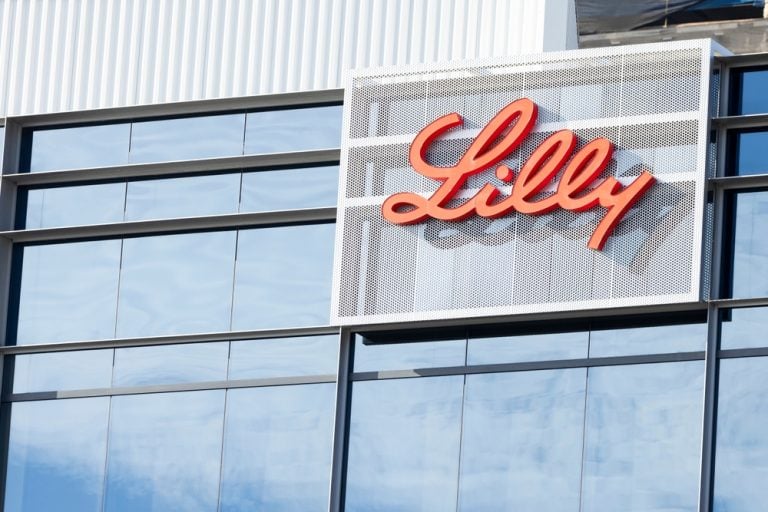Mach7 Technologies reports third consecutive year of record sales growth in FY23
View on enterprise imaging extends beyond radiology
CEO Mike Lampron says AI hurdles right now need to be overcome
Morgans healthcare analyst Scott Power likes to describe Mach7 Technologies (ASX:M7T) as “like the baby brother” of ProMedicus (ASX:PME)
The health imaging company has landed some big deals in 2023, including participation in the Veterans Health Administration’s National Teleradiology Program (NTP) in the US in a deal which could be worth up to $60 million.
Under the contract, M7T will provide its vendor neutral archive (VNA) and eUnity Enterprise Diagnostic Viewer solutions, which will be integral to the NTP NextGen PACS architecture and will serve as a replacement PACS for VISNs as it transitions off existing contracts.
Furthermore, M7T reported its third consecutive year of record sales order growth in FY23, which at $40.3 TCV, was up 21% YoY.
It also reported record revenue of $30.1 million, up 11% on FY22 with the recurring component up 22%.
With the largest and most diverse pipeline of sales opportunities in its history, the company is forecasting further strong ongoing sales and order growth in FY24 and beyond.
Stockhead caught up with M7T CEO Mike Lampron on his recent visit to Australia to discuss the company’s growth and what lies ahead.
Mach7 CEO Mike Lampron. Pic: Supplied
Mach7 describes itself as an enterprise imaging vendor. Can you explain what this means?
“What separates us from some of our competitors is our view on enterprise imaging,” Lampron says.
“Medical Imaging Industry Societies (HIMSS & SIIM) have defined Enterprise Imaging as a set of strategies and workflows across the healthcare enterprise that can capture, index, manage, store, distribute, view and exchange critical imaging data.
“So it’s a pretty well defined definition on exactly what enterprise imaging is, but that being said, it is a term that has been used for the last decade or so.
“People talk about enterprise imaging but really what they’re talking about is enterprise radiology imaging and thinking of it from a radiology perspective rather than a true enterprise imaging network.
“At Mach7 we look at what’s necessary from a tech stack to build an enterprise imaging strategy.
“The first thing, in our view is called a vendor neutral archive, a software platform that can do the storing, managing, indexing of all these images whether from radiology, pathology or dermatology or any other ‘ology’ in the enterprise.
“The first step is getting the images all centralised in a single repository where it can be securely managed and then specific workflows can be created which will allow for efficient distribution.
“This distribution and workflow is very important and requires flexibility and an easy to use platform that users can modify without the assistance of a vendor.
“Often times this distribution is the end result of integrating third party systems like Electronic Medical Records.
“The last component for us is our enterprise diagnostic viewer, which is the eUnity viewer, which we acquired in 2020 from Client Outlook.
“For us, having this very disruptive and unique front-end makes all the difference.
“This allows us to complete the definition of enterprise imaging.
“We have a zero-footprint viewer which means there’s no software to download making it easy for people working inside and outside the walls of the hospital to use.
“IT loves it because there is no software to load, no VPN to slow down the software and no IT assistance necessary to get up and running. Just an HTML viewer like Google Chrome.
“Once you have that viewer you’ve got all the tools you need as a radiologist or a general clinician, so it’s this really nice flexible viewer that integrates well for third parties.
“So, between those product lines those are the areas we’re covering and why we call ourselves an enterprise imaging vendor.”
Mach7 reported strong FY23 results. Were you happy with the results and what is the outlook for FY24?
“For FY23 we definitely had a really good year and were really happy with our orders book. We’ve consistently said that sales are the best metric to look at for success given the maturity of our company. Good sales numbers mean our products are resonating in the marketplace,” Lampron says.
“In FY24 we’ve guided to $48 million in sales orders which will show a 20% growth trajectory and then 15 to 25% growth in revenue.
“The reason we are providing a range is that we are experiencing a bit of a shift in our business model that is moving from a 60/40 split of subscription licences to capital licences.
“So 60% of our deals were subscription licences for the last couple of years and 40% were capital licences and you get this sudden increase in cash and revenue with capital licences but you get the quality of recurring revenue with subscription licences and it has been a successful blend over the years.
“We see the buyers shifting more to a 70/30 or 80/20 split which is going to be much more heavily weighted towards a subscription operating model.
“Because of that we have a bit of a sliding scale for revenue and that will have some short-term effects on softer revenue at some point in time.
“However, if you have a mid to long-term view it’s going to be longer-lasting quality revenue for years to come so we’re pretty excited for how FY24 is shaping up.”
In a market with fragmented opportunities, what is the strategy to maintain growth while it seems many of the large incumbents are losing market share?
“One of the greatest things about our business is that we can sell across the industry in regard to where we can win deals,” Lampron says.
“We will sell to the acute care space which is the hospital segment or the ambulatory space which is the outpatient segment, and this opens up a pretty broad market to us.
“I believe most of our competitors have a specific market segment that they go after. They will end up concentrating on one or the other.
“Taking it a further step, we sell by solution so we can sell the VNA only, viewer only, or the communications workflow engine only.
“This modular approach gives us the ability to solve today’s problems for the customer. It also allows them flexibility without making a massive investment across a single vendor ecosystem.
“This approach is part of our overarching land and expand sales model.
“We think this leads to better customer engagement, future add-on orders, expansion licences and a customer culture where we continue business with our customers for years to come after the initial deal.
Looking at the evolution of Mach 7. What type of businesses do you see potentially targeting as add-ons?
“We don’t really feel like we have an imminent product gap that needs to be solved but we are constantly evaluating the market and where we stand,” Lampron says.
“From an acquisition perspective and thinking about enterprise solutions we look at areas we think would be the most interesting.
“One is workflow orchestration which we do now but could see some of these vendors in the market really adding value to components we have.
“Alternatively, I could see a really good use case for data and business analytics.
“AI and natural language processing component are having a big impact in this segment of the industry.
“I think these tools could assist customers with workflow, insights or both.
“They could also complement the work we have already done with our current components.”
There’s been lots of talk about cloud storage and moving images around – all this consumes data and storage – can you talk to the industry’s image life-cycle management and thoughts on optimising storage costs?
“It’s a big conversation and I would start off by commenting on a few false narratives around the cloud and what people should be cautious about with medical imaging,” Lampron says.
“The first thing is not everyone who says they’re in the cloud are really being accurate and there’s levels of cloud readiness and adoption for both the vendors and consumers.
“I think the majority of buyers are in the early stages of cloud adoption and I’d say vendors are in the really early stages of having a true cloud solution and there’s still a lot of unknowns in how that will translate into business models.
“Which brings me to whether the cloud is really cheaper and it’s not necessarily true that it’s cheaper.
“There are ingress and egress fees for every piece of data you put in or take out of the cloud, investment in network architecture, bandwidth providers, WAN investment, etc..
“Some of those expenses can be offset by the elimination of onsite infrastructure.
“Each individual buyer needs to assess their own situation before they just assume this will save them money.
“I don’t think there’s a lot of medical imaging software vendors who are there yet and can really supply that true infrastructure as a service ROI.
“Once that happens, I think the buyers will get more value for their buck.
“Ultimately when it comes to imaging, customers are going to choose to have some things in the cloud and some things on premise.
“I think customers will have their backups and image repository for research and development and non-diagnostic use in the cloud and images for primary diagnosis more on premises in a cache at least for the acute care segment.
“The ambulatory care segment will move to the cloud a little faster.”
Could you discuss the challenges related to AI adoption, including issues around reimbursement and what you see as the potential catalysts for broader adoption?
“AI is going to have a big impact in healthcare but there are hurdles right now that need to be overcome. There are differences in what type of AI we are talking about and what it’s going to be used for,” Lampron says.
“In imaging it is being used for diagnostic purposes and I think there are regulatory hurdles along with the reimbursement hurdles that still remain for broad use and acceptance.
“But if we’re thinking of non-clinical AI I think there are use cases that can come to market quicker.
“They need to still prove there is an ROI with buyers.
“I think the C-Suite is rightfully sceptical of soft ROIs and how you can actually calculate benefits and measure success.
“In the US we are starting to see some of the first legal cases and healthcare coming through the court systems now.
“I think the industry will have a better view on the impact of legal and governance once some of that’s been evaluated from a legal grounding perspective and risk can be more understood.
Where are the main areas of interest around AI for Mach7?
“For us, we’re not in the business of developing our own AI solutions and see our value to our customers based on helping them with data management side of AI for imaging,” Lampron says.
“If they need imaging data, we can help them evaluate current data, stratify the data into categories, edit that data with specific information and manage that data in a meaningful way.
“That’s one big part where we see our fit with AI.
“We will also need to integrate with third parties so they can have access to this data.
“This gives the customer the ability to find the right AI partners and use whatever vendor they think is best for their use cases.
“We will integrate to those vendors rather than us try to tell the customer what’s best for their use cases.
“I think if we were to try to develop our own algorithms, we would always be a step behind, and I’d rather integrate and put the power back in the customers hands.”
The M7T share price today:
Disclosure: The author held shares in Mach 7 Technologies at the time of writing this article.
The post Q+A: Mach 7 CEO Mike Lampron on a barnstorming year and why AI isn’t the easy win it looks like appeared first on Stockhead.





















+ There are no comments
Add yours